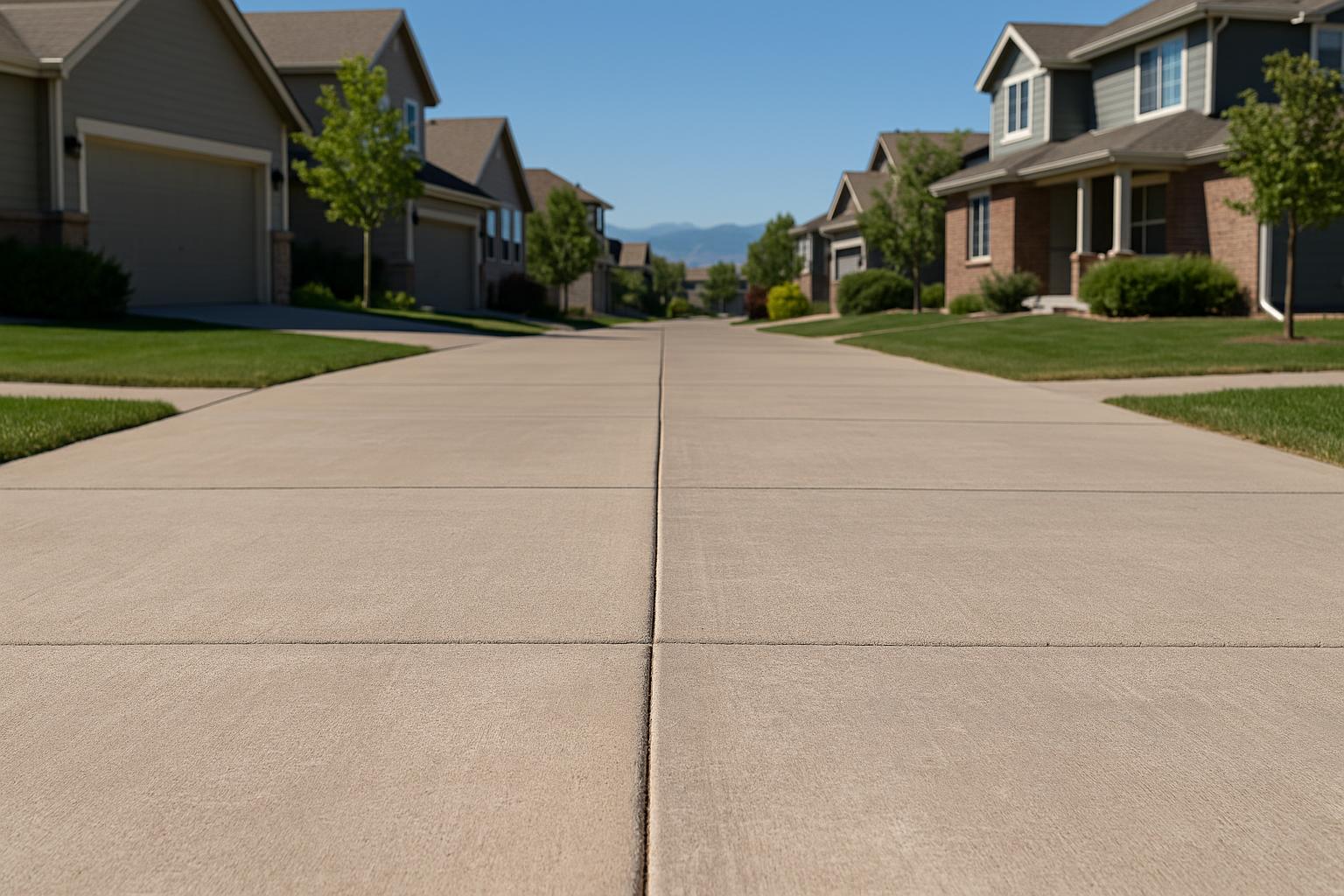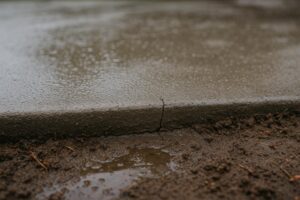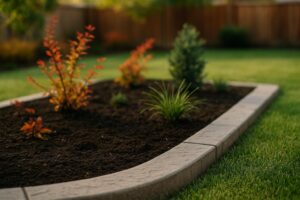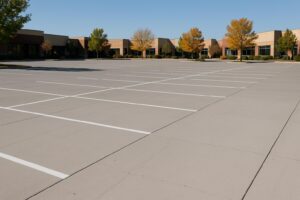The Unseen Threat of Colorado’s Sunshine State
Here in Denver, we’re proud of our 300 days of sunshine. It’s a key part of our active, outdoor lifestyle. But the same high-altitude sun we love poses a significant threat to our property’s concrete surfaces. The intense ultraviolet (UV) radiation in Colorado can accelerate the deterioration of driveways, patios, walkways, and pool decks, leading to cosmetic issues and serious structural problems. Understanding the impact of this constant UV exposure is the first step toward effective concrete protection and repair.
This isn’t just about looks; it’s about the safety and longevity of your investment. Faded, cracked, and breaking concrete is more than an eyesore—it can be a trip hazard and a sign of deeper issues. At Elevate Concrete Lifting, we see firsthand how Denver’s unique climate challenges concrete, and we specialize in providing lasting solutions.
What is UV Degradation and How Does It Weaken Concrete?
UV degradation is the process where intense sunlight breaks down the chemical bonds in materials. While concrete is incredibly durable, it’s not immune. The primary target of UV rays is the sealant and the binding agents within the top layer of the concrete itself. Over time, relentless sun exposure causes these binders to weaken and break apart.
This leads to several visible signs of damage:
- Color Fading: Stamped or colored concrete can lose its vibrancy, looking washed-out and old.
- Chalking: The surface develops a fine, powdery layer as the binders disintegrate, which can be rubbed off with your hand.
- Weakened Surface: The top layer becomes more brittle and susceptible to chipping, flaking, and spalling.
At Denver’s mile-high altitude, UV radiation is approximately 25% more intense than at sea level. This significantly accelerates the degradation process, making proactive concrete care a necessity, not a luxury.
The One-Two Punch: UV Damage and Colorado’s Freeze-Thaw Cycle
UV damage is rarely an isolated problem in Colorado. It acts as the initial aggressor, weakening the concrete’s defenses and setting the stage for a more destructive force: the freeze-thaw cycle.
As UV rays make the concrete surface more porous, it absorbs more water from rain and snowmelt. When temperatures drop below freezing, this trapped water expands by about 9%, exerting immense internal pressure. This pressure creates micro-cracks, which grow larger with each subsequent freeze. A small, sun-damaged crack quickly becomes a significant structural issue. This cycle is a primary cause of heaving, sinking, and widespread cracking across both residential and commercial properties in the Denver area.
Effective Strategies for Denver Concrete Protection
Protecting your concrete from UV damage and its consequences requires a multi-faceted approach. Waiting for problems to appear is far more costly than preventing them.
1. Apply High-Quality, UV-Resistant Sealant
Sealing is the most effective proactive measure. A professionally applied, high-quality penetrating sealant creates a protective barrier that blocks UV rays and prevents water absorption. For Colorado, it’s crucial to use a sealant specifically formulated to withstand high UV exposure. This service, often part of a comprehensive crack and joint sealing plan, preserves the color and integrity of your concrete for years.
2. Address Cracks Immediately
Don’t ignore small cracks. They are open invitations for water infiltration and the freeze-thaw cycle. Our concrete crack repair service uses flexible, durable materials to fill cracks and prevent them from expanding, stopping the damage before it escalates.
3. Lift and Stabilize with Polyurethane Foam
If your concrete has already started to sink or settle due to underlying soil erosion—often worsened by water intrusion—lifting is the answer. Modern polyurethane foam injection is the premier solution. This method involves drilling small, discreet holes and injecting high-density, structural foam beneath the slab. The foam expands to fill voids, lift the concrete back to its original position, and stabilize the soil below. Its waterproof nature prevents future erosion, directly combating the effects of water damage that started with UV degradation.
Polyurethane Foam vs. Traditional Mudjacking
| Feature | Polyurethane Foam | Traditional Mudjacking |
|---|---|---|
| Installation | Small 5/8-inch drill holes, minimal disruption. | Large 1.5 to 2-inch drill holes, more invasive. |
| Cure Time | Ready for use in as little as 30 minutes. | Requires 24-48 hours to cure. |
| Material Weight | Ultra-lightweight (2-4 lbs/cu. ft.), adds no stress to soil. | Very heavy (100-120 lbs/cu. ft.), can burden unstable soil. |
| Water Resistance | Hydrophobic; repels water and prevents future erosion. | Porous material; can wash out over time. |
Did You Know? Quick Facts
- Because of Denver’s 5,280-foot elevation, the atmosphere is thinner, filtering out less UV radiation than at sea level. This makes materials degrade faster.
- Polyurethane foam is a “closed-cell” material, meaning it won’t absorb water. This creates a permanent, waterproof barrier under your concrete slab.
- To add aesthetic appeal and definition after a repair, consider adding decorative concrete edging or curbing, which can frame your restored patio or walkway beautifully.
Ready to Protect Your Concrete Investment?
Don’t let Colorado’s beautiful sun cause ugly damage to your property. If you’ve noticed fading, cracking, or sinking concrete, it’s time to act. The expert team at Elevate Concrete Lifting is here to provide a thorough assessment and recommend the best solution for your Denver home or business.
Frequently Asked Questions
How often should I seal my concrete in Colorado?
Due to the high UV exposure and harsh weather, we recommend sealing exterior concrete every 2-3 years in the Denver area. This can vary based on the amount of direct sun and traffic the surface receives.
Can you repair concrete that is already faded and cracked from the sun?
Yes. We can repair cracks to restore structural integrity. For faded concrete, pressure washing followed by the application of a quality tinted sealant can often restore its appearance while providing crucial protection.
Is polyurethane foam injection a permanent solution?
Yes, polyurethane foam is an inert, highly durable, and waterproof material that does not degrade or break down underground. It provides a long-lasting solution by both lifting the concrete and stabilizing the soil base permanently.
How long does the polyurethane foam repair process take?
Most residential projects, like driveways or patios, are completed in just a few hours. The concrete is ready for foot traffic in about 30 minutes and vehicle traffic the same day, making it an incredibly efficient process.
Glossary of Terms
UV Degradation: The process where ultraviolet light from the sun weakens and breaks down the molecular bonds in materials like concrete sealers and binders, causing fading and brittleness.
Polyurethane Foam: A two-part liquid polymer that, when injected, undergoes a chemical reaction to expand and harden into a lightweight but strong and dense material ideal for lifting and supporting concrete.
Freeze-Thaw Cycle: A weather-related process where water penetrates porous materials, freezes, expands, and then thaws. This repeated expansion and contraction exerts immense force, causing cracks and spalling in concrete.
Spalling: The chipping, flaking, or peeling of a concrete surface, often caused by moisture intrusion and the pressure from the freeze-thaw cycle.





